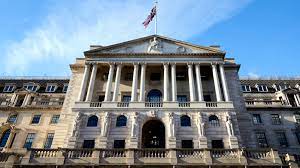
In 2023, significant shifts unfolded in the mortgage landscape, challenging the predictions made earlier. Inflation surged, mortgage rates fluctuated, living expenses tightened, and the closure of the Help to Buy scheme impacted the mortgage market. These changes continue to shape the mortgage realm in 2024, influencing both short-term trends and future prospects.

Written By Mark Brown

Here’s a comprehensive view of what’s anticipated in the mortgages and housing market for the upcoming year, covering the dynamics of mortgage rates, house prices, energy efficiency considerations, new build trends, and rental market transformations.
1. Mortgage Rate Predictions for 2024
Anticipations suggest a probable decrease in mortgage rates during 2024. Recent trends have shown a decline in rates since August, with average 2-year fixed rates at 5.95% and 5-year fixes at 5.57%, down from previous levels. The downward trend has been partly driven by a decrease in inflation to 3.9%. While slight fluctuations might occur due to inflation shifts, the trajectory points to a continued decline, especially in the latter half of the year. However, it’s unlikely that rates will hit sub-4% levels as a standard until later in 2024 or beyond.
For potential homebuyers, the current market scenario could offer advantageous opportunities due to reduced demand amidst higher rates. While monthly repayments might be higher, negotiating lower purchase prices or accessing bargains becomes a possibility. Homeowners planning to remortgage can benefit by exploring current rates and securing a rate ahead of time, allowing flexibility if rates decrease further.
2. Projected House Price Trends
Property prices experienced a decline in 2023 and are expected to further decrease in 2024, with forecasts indicating a potential 10% drop by 2025. This could result in an average £50K reduction in property prices by the end of 2024. Coupled with declining mortgage rates, the market leans towards favoring buyers. Negotiating a 5-10% reduction in purchase prices may become more feasible for those aiming to enter the market.
However, short-term fluctuations might impact property values, potentially posing challenges for sellers planning to move to a new property, as reduced sale proceeds might limit options.
3. Emphasis on Energy Efficiency
Given escalating energy costs and growing sustainability concerns, homebuyers, especially landlords and Buy to Let property investors, are likely to prioritize energy-efficient properties. New regulations slated for 2025 mandate higher energy performance standards for tenanted properties, potentially prompting upgrades in many homes. Nearly 9 out of 10 prospective buyers consider a home’s energy efficiency crucial, potentially influencing property sellers to enhance their homes before listing.
4. Increase in New Build Offerings
Construction activities are expected to pick up in 2024, responding to market conditions and supported by funding for affordable housing initiatives. The rise in new build properties entering the market aims to address the housing supply shortage. Despite efforts, meeting the UK’s housing deficit remains a long-term challenge. The surge in construction could introduce more shared ownership properties, providing a more accessible entry point into homeownership, especially in expensive regions.

5. Transformation in the Rental Market
The pending Renter’s Reform Bill, likely to come into effect in 2024, signifies a significant overhaul in rental regulations. The bill aims to ensure fairness for both tenants and landlords by implementing various changes, including longer notice periods, more protections for tenants, limitations on rent increases, and reforms in eviction procedures. This legislation aims to improve the quality of rented accommodations, addressing issues of substandard living conditions and eviction practices.
Additionally, discussions persist around the extension of housing standards to private rentals, aligning with the Decent Homes Standard applied to social housing.
Market Update: Mortgage Rates and Trends
Recent developments indicate a downward trend in mainstream mortgage rates, with five-year fixed deals dropping below 4% and two-year fixes expected to fall below 4.5%. Lenders are gradually reducing rates in response to market conditions, driven by predictions of a potential base rate decrease by the Bank of England. However, the pace and extent of these rate reductions remain uncertain, urging homeowners to consider remortgage options and potentially secure fixed rates in advance for stability and flexibility against potential rate hikes.
In essence, the mortgage and housing market in 2024 seems poised for shifts driven by evolving economic conditions, regulatory changes, and market dynamics. Prospective buyers, homeowners, and investors can leverage these trends and adapt strategies accordingly to navigate the evolving landscape.

Proudly powered by WordPress

I became a regular on this fantastic website a few days back, they offer wonderful content for members. The site owner excels at providing value to the community. I’m delighted and hope they persist in their magnificent efforts!